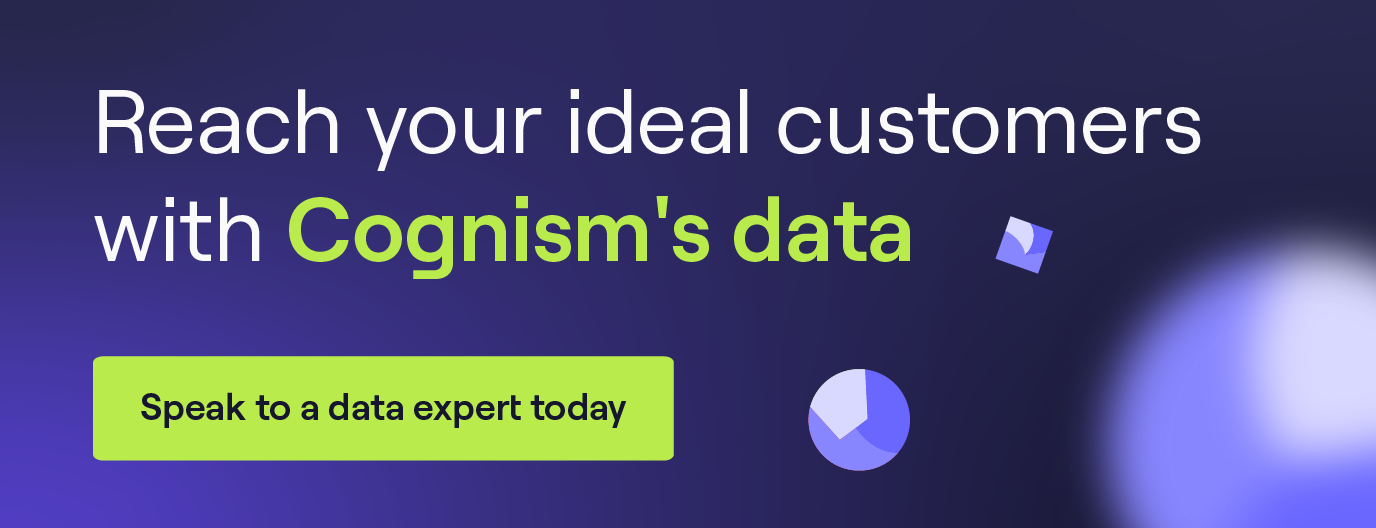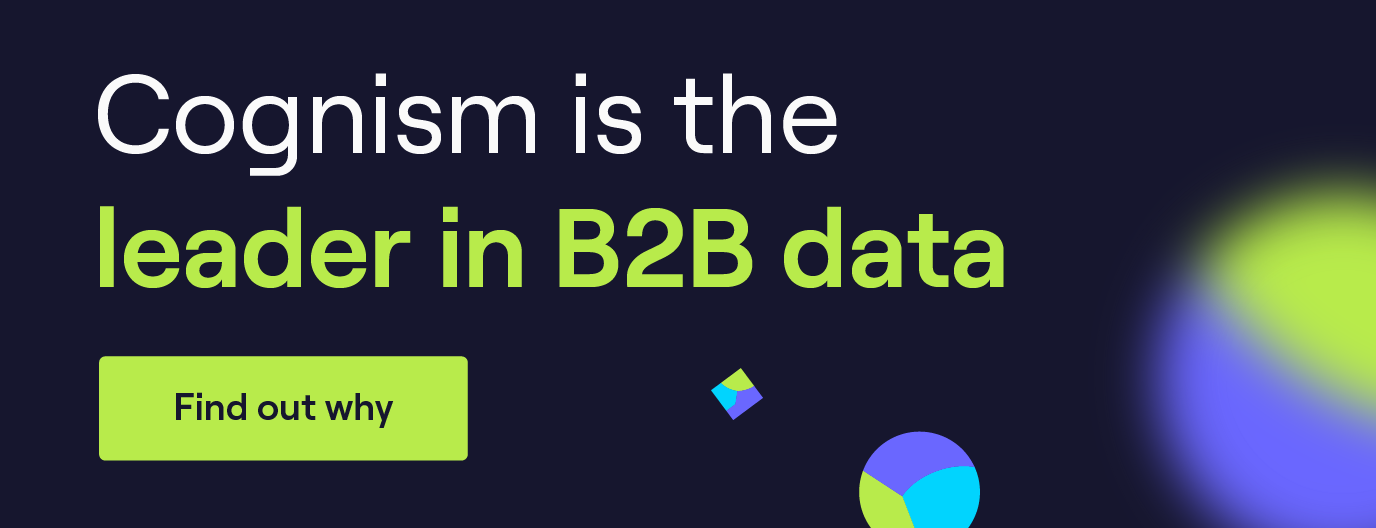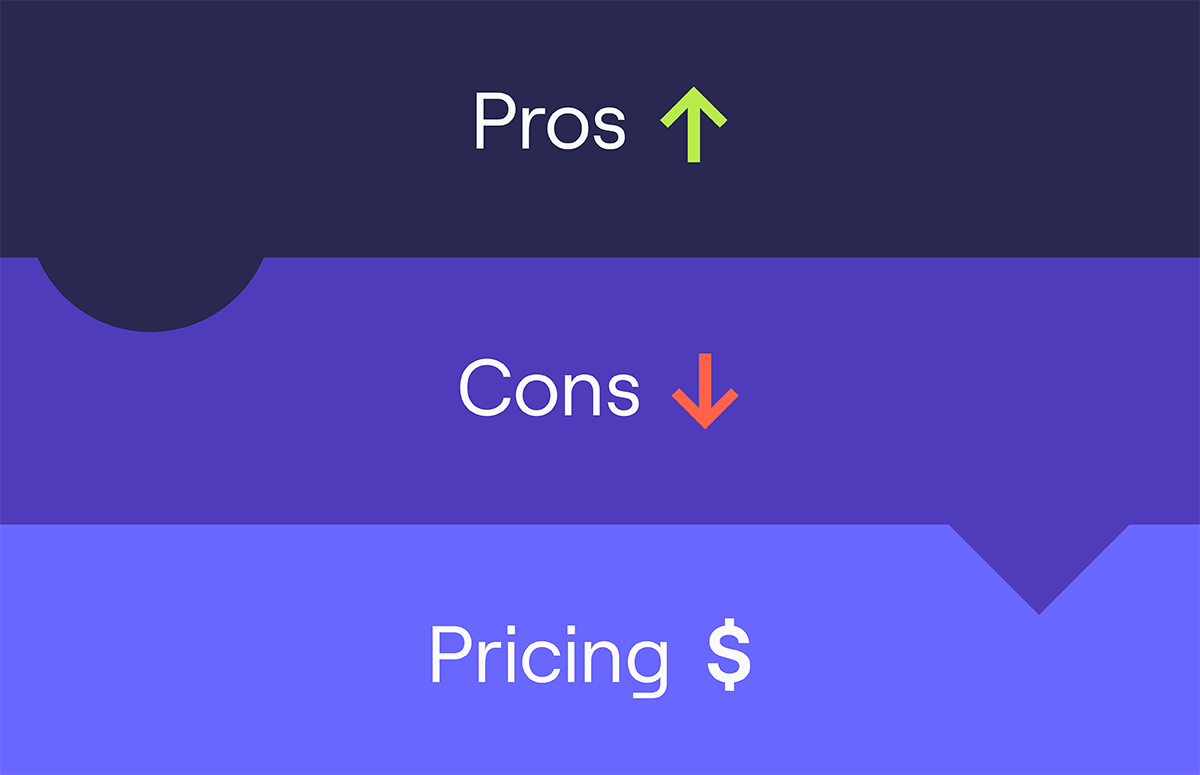How to Use Technographic Data to Skyrocket B2B Revenue
Understanding your prospect’s technology stack isn’t just a bonus; it’s a necessity.
Enter technographic data that helps reveal the software, hardware, and apps companies use.
From personalised campaigns to data-driven decision-making, technographic segmentation unlocks a goldmine of opportunities.
In this article, we’ll deep dive into the “what”, “why”, and “how” of technographic data - by the time you’ve finished reading it, you’ll know what technographics are, how they’re collected and how your sales and marketing teams can benefit from it.
Let’s get started 👇
What is technographic data?
Technographics (or technographic data) is information about a company’s technology stack, encompassing hardware, software, and applications. This data may also involve details about when the companies acquired their specific technologies.
Technographics go beyond simply identifying the software a potential customer uses. It delves deeper, uncovering the following:
-
Hardware and operating systems: Windows, macOS, Linux, mobile devices (iOS, Android), and cloud platforms (AWS, Azure, GCP).
-
Industry-specific tools: Design software for agencies, legal research platforms for law firms, and financial trading platforms for banks.
-
Social media presence: Preferred platforms, engagement levels, brand mentions.
-
Emerging technologies: Adoption of AI, blockchain, Iot, and quantum computing solutions.
On top of this, you can get even more…
-
Purchase dates and usage patterns: It helps you find out when prospects have adopted a specific tool and how frequently they use it.
-
Integration details: You should learn how a potential buyer’s CRM integrates with their sales or marketing automation platform.
-
Version information: You can find out if prospects are using the latest software version or sticking with an older one.
By weaving these threads together, you better understand a prospective customer’s technological preferences, challenges, and future needs.
You’ll also be able to use technographics as a buying signal, surfacing when the tech was adopted (to predict when it will be up for renewal) and the intensity of its usage.
Data points like this really help salespeople understand the internal use case and whether they would be open to switching.

Think of it this way:
-
Demographic data tells you who your target customer is (age, income, location).
-
Firmographic data tells you about the company (size, industry, revenue).
-
Technographic data tells you what technology your ideal prospects use and how they use it, painting a complete picture of their digital landscape.
Importance of technographic data
If you know how to use it, this type of B2B data can be extremely helpful.
Sure, it can show you if a company and their employees are using a competitor or complementary technology, but it can also show you:
-
Their level of technical expertise.
-
Their budget and how much money they will spend on a new technology.
-
If they’re problem-aware or need additional education.
For example:
If someone is using your nearest competitor, you know they need the solution you provide, even if they’re currently finding it elsewhere.
Knowing this will also prepare your outbound sales team; they’ll likely need different sales assets like battle cards, one-pagers and case studies to show prospects why your solution is a better option.
If you integrate with a specific B2B technology, you can target users of that particular technology, demonstrating how your solution enriches or improves the company’s existing workflows.
Alternatively, if you believe a company needs your solution but doesn’t have one in their tech stack, then there’s an opportunity for you to plug that gap.
In this case, you can share educational content, best practice documents and case studies that show prospective customers the value your product can bring and how other companies are solving similar challenges.
Technographics can help you make gains in five essential areas:
Segmentation
Technographics allow you to create lists of prospects with similar needs, which you can target with personalised messages and content.
Understanding
When you know the specific tools a prospect uses, you know the problems they face and the steps they take to solve them. It’s a great conversation starter.
Lead scoring
Technographics help you prioritise the leads more likely to need what you sell, meaning you can focus on calling them first.
Shortening the sales cycle
Technographic data insights can help you reach a prospect when they’re more likely to be interested in what you have to say.
Competitive analysis
How are your competitors finding success? Are they taking opportunities you were previously missing?
Examples of technographic data
You can categorise examples of technographic data based on the following criteria:
1. Technology used
- Software: CRM (Salesforce, HubSpot), marketing automation (Marketo, Pardot), project management (Asana, Trello), content management systems (WordPress, a WordPress AI Website Builder, Drupal), accounting software (Xero, Quickbooks and alternatives), data analytics platforms (Tableau, Power BI)
- Hardware: Operating systems (Windows, macOS, Linux), mobile devices (iOS, Android), cloud service providers (AWS, Azure, GCP))
- Industry-specific tools: Design software (Adobe Creative Suite, Sketch), legal research platforms (Westlaw, LexisNexis), financial trading platforms (Bloomberg Terminal, Refinitiv)
- Social media platforms: Used platforms (Facebook, LinkedIn, Twitter), engagement levels, brand mentions
2. Technology usage
- Purchase date and version: When did your ideal customer adopt a specific tool? Are they using the latest version?
- Usage frequency: How often do they use a particular software?
- Integration details: Does their CRM integrate with their marketing automation platform?
- Emerging technology adoption: Do they utilise AI, blockchain, or IoT solutions?
3. Additional sources
- Website crawlers and tracking pixels: Uncover hidden details about installed software, plugins, and technologies used on a company’s website.
- Data enrichment platforms: Enhance existing data with additional technographic insights, including industry-specific tools, purchase dates, and usage patterns.
- Social media listening tools: Track mentions of specific technologies on social media, identifying companies actively using them and gauging industry trends.
- Partnerships with industry associations and research firms: Collaborate with relevant organisations to access exclusive technographic data sets and market insights.
4. Case-specific applications
Here are some additional examples of business technographics alongside questions it helps you answer about potential clients:
- Security platforms: Are they using multi-factor authentication or encryption solutions?
- Collaboration tools: Do they use Slack or Microsoft Teams for internal communication?
- Marketing technology stack: Do they leverage email marketing automation, retargeting campaigns, or social media advertising platforms?
- Data management practices: Are they using cloud-based data warehouses or on-premise solutions?
Technographic data collection methods
To collect technographic data, a good place to start is examining internal sources like website analytics, CRM entries, and product usage data to see what technologies your existing customers or website visitors rely on.
Digging deeper, public data like company websites, social media profiles, and job postings can reveal what tools they publicly endorse or require.
Consider partnering with a technographic data provider like Cognism, Lusha or ZoomInfo for a detailed picture.
These companies specialise in collecting and analysing vast amounts of information, giving you insights like specific software usage, purchase dates, and even how frequently they use it.
For example, PeerNova used Cognism to facilitate laser-focused targeting through technographic and job join search filters.
They said:
“With Cognism, our open rates are 12-15%, with little to no bounce rates. These statistics are fitting for the enterprise space.”
“For us, it’s not a numbers game. It’s talking to the right people at the right time and solving their data challenges. As marketers, we measure the success of our outreach based on the quality of leads generated. Cognism has played an integral role in this endeavour.”
Find out how our technographics can help your sales team 👇
Where can you get B2B technographic data?
There are several avenues to acquire B2B technographic data, each with its own strengths and considerations:
Internal sources
Internal data like website analytics, CRM entries, and product usage reveal valuable clues about customer technology choices.
- Website analytics: Analyse visitor data to identify browsers, operating systems, and potentially even specific tools used.
- CRM data: Look for clues about customer technology usage in support tickets, sales interactions, and CRM entries.
- Product usage data: Track how customers interact with your product and integrate with existing tools, revealing their tech stack.
Public data sources
Company websites, social media profiles, and job postings unveil the technologies businesses openly embrace.
- Company websites: Many companies list technology partners or mention specific tools they use on their websites.
- Social media profiles: Analyse company social media profiles to see which technologies they discuss or link to.
- Job postings: Job descriptions often mention required or preferred technologies, offering insights into a potential prospect’s tech stack.
Technographic data providers
Data providers meticulously gather vast amounts of information, offering detailed insights like specific software usage, purchase dates, and usage patterns for targeted B2B prospecting.
Two examples of technographic data intelligence platforms are:
1. Cognism
Cognism unlocks in-depth technographic insights with international reach and compliance, delving beyond software to mobile numbers.
It offers leading coverage in EMEA, US, and APAC regions, making it ideal for businesses with global aspirations.
2. Bombora
Bombora is an intent data provider that identifies companies actively researching specific solutions and leveraging website behaviour and third-party data sources.
Some data vendors like Cognism partner with Bombora for exclusive intent topics.
Additional methods
- Data enrichment platforms: Enhance existing data with additional technographic insights by integrating your CRM or automation platform with these services.
- Website crawlers and tracking pixels: Deploy tools that crawl websites and identify technology used on the backend, offering deeper insights into their infrastructure.
- Social media listening tools: Track mentions of specific technologies on social media to identify companies actively using them and gauge industry trends.
- Partnerships with industry associations: Collaborate with relevant industry organisations to access exclusive technographic data sets and market insights specific to your niche.
Remember, no single source holds all the answers. Use a combination of methods for a comprehensive picture.
Choose data providers with a strong reputation for accuracy and compliance practices. Also, regularly update your sales data to ensure its relevance and effectiveness.
How to use technographics for better B2B sales
You can apply company technographic data to achieve your business goals in various ways.
Let’s review the main ones:
1. Targeted prospecting
Gartner predicts over 60% of software purchases will be replacement buys this year.
Technographic data helps you do targeted prospecting by identifying companies using similar tools to your solution, ensuring your outreach speaks directly to their needs. You’ll be able to probe using questions targeted towards the weaknesses of the current solution and how yours is better.
By reaching out to such companies, you ensure that prospects are familiar with your technology. This, in turn, instantly breaks down barriers and establishes trust.
2. Build personalised outreach
Technographic data reveals specific pain points and needs based on a customer’s existing tools.
Craft personalised pitches that address their unique challenges and showcase how your solution integrates seamlessly into their ecosystem. Imagine delivering tailored solutions that feel like they were built just for them.
SparkForce, for example, uses Cognism to narrow down its lists. They filter out by “must have SAP” as ICP criteria, something they couldn’t do without Cognism. This helps their outreach land through better targeting and saves time wasted on irrelevant companies.
3. Use competitor intelligence
Technographics helps you see who’s using your competition’s technology. Gain a bird’s-eye view of your competitors, identify gaps in their offerings, and highlight how your solution surpasses them.
If a lead comes inbound to you but is already using a competitor, it’s a strong signal that they intend to switch. Use what you know from previous deals to address points where your product is stronger.
4. Build lasting relationships
Understanding their technology ecosystem lets you anticipate prospects’ needs, offer proactive support, and upsell relevant solutions. This way, you become a trusted advisor, not just a vendor, fostering long-lasting partnerships that drive ongoing value.
Cognism, for example, has a database of over 20,000 technologies to help users pitch complementary or competitive solutions.
It also determines the likelihood of adoption through intensity scoring, helping reps identify where their time is best spent.
5. Uncover hidden needs and opportunities
Analysing your prospect’s tech stack gives you a valuable window into their challenges and unmet needs.
Imagine discovering they use Salesforce, opening the door to pitch your integration seamlessly, and solving their pain points.
Even competitor usage reveals vulnerabilities, allowing you to tailor your solution for a compelling switch.
6. Segment for smarter outreach
Analysing your existing customers’ tech stacks reveals patterns. You might discover that most use HubSpot, indicating their budget and marketing priorities.
This data helps categorise prospects based on size, technology maturity, and potential fit, enabling targeted, efficient outreach.
7. Support account-based marketing
Technographic data lets you personalise content to resonate deeply with your audience.
This is especially useful for account-based marketing as you can identify their preferred channels for tailored campaigns. You can also learn about their specific tech challenges and even niche concerns.
Share insider tips and solutions tailored to their unique tech environment, fostering trust and engagement.
8. Prioritise leads with confidence
Combine technographic and firmographic data to create a rich customer profile. This empowers you to prioritise leads with high conversion potential.
This way, your sales team focuses on qualified prospects so that they can close more easily.
Premium business technographics from Cognism
If you want to use technographics to gain a competitive edge in the marketplace, it’s time to talk to Cognism.
As a leading B2B technographic data platform, Cognism brings you advanced prospect and account intelligence to book more meetings and close deals faster than ever before.
Using the Cognism platform, you can access firmographic, demographic, chronographic, technographic, contact, and intent data (powered by Bombora). This powerful data combo gives you a 360-degree view of your ideal customer.
1k+ revenue teams use Cognism to identify and engage their dream prospects. Find out why by clicking 👇

.png?width=672&height=982&name=Technographics%20Inforgraphic%20and%20pullthrough%20image-02%20(1).png)



